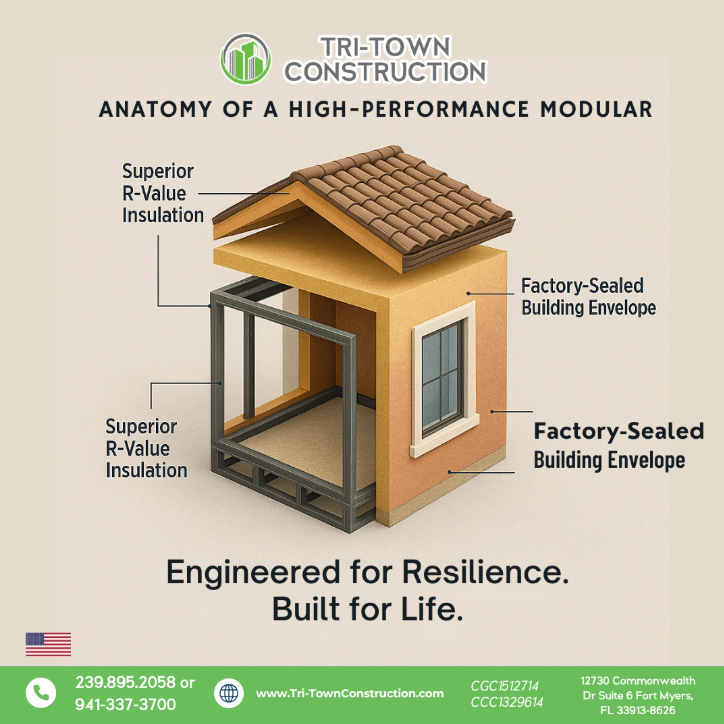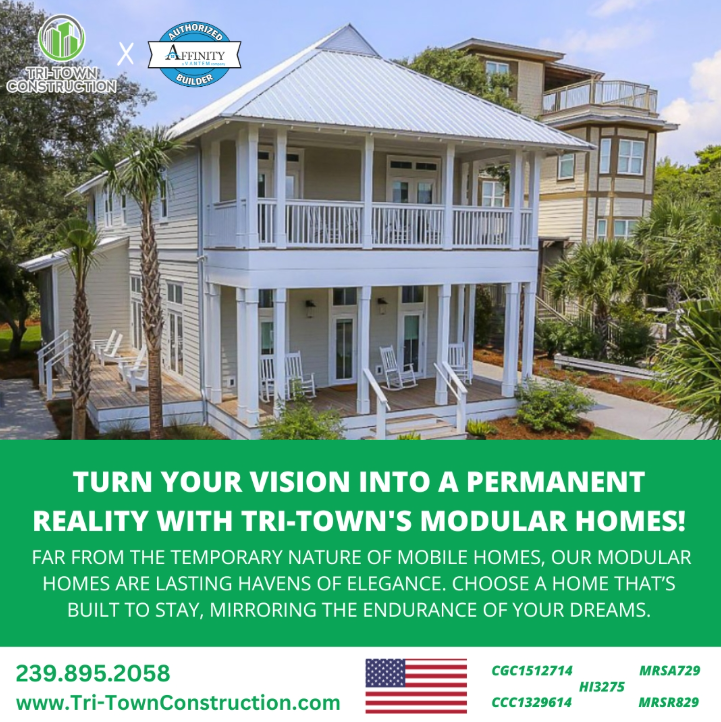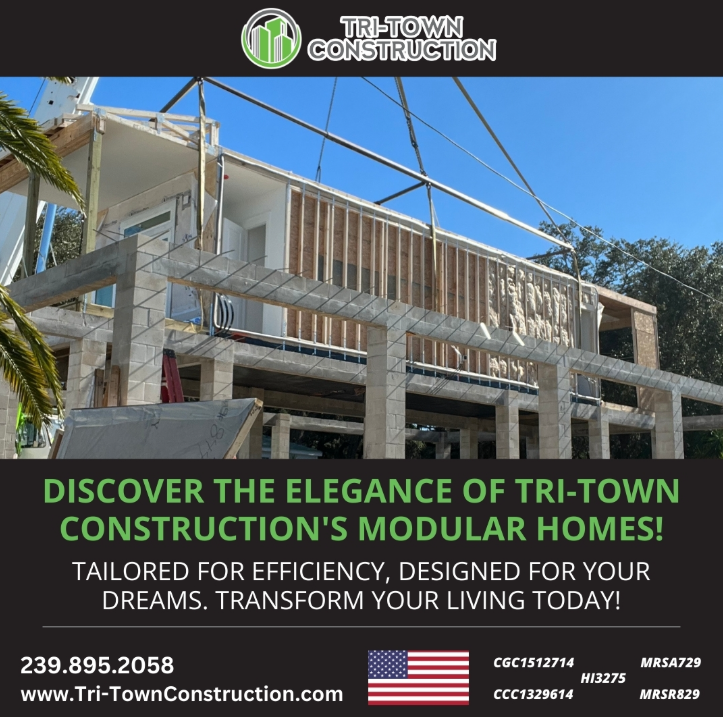Modular Homes vs Mobile Homes: Key Differences Explained
Modular homes are permanent, code-compliant houses built in factories and set on real foundations, while trailers (manufactured homes) are movable structures built on steel chassis and classified as personal property unless retitled.
Modular vs Trailer Homes: What You Need to Know First
Not all factory-built homes are created equal.
Many people confuse modular homes with trailers or manufactured homes, but they’re built to different standards, serve different needs, and perform very differently over time.
Here’s what you need to know right up front:
- Modular homes are built to local building codes (IRC), just like traditional homes.
- Manufactured homes (trailers) follow HUD code, designed more for mobility than long-term performance.
- Modulars are placed on permanent foundations and qualify as real estate.
- Trailers usually sit on piers or blocks, and unless retitled, they depreciate like vehicles.
- Modular homes appreciate, are easier to finance and insure, and can be customized like any site-built home.
- Maintenance is simpler with modular due to use of standard parts, unlike many trailers with non-standard components.
- In hurricane zones, modular homes can be engineered to withstand up to 180 mph winds, most trailers can’t come close.
Whether you’re looking to build a long-term home or avoid costly insurance and financing surprises, understanding this difference is essential.
But if you’re thinking of building in Florida or anywhere storm-prone, there’s more to this story.
From real-world durability to hidden ownership costs, it’s worth understanding why modular homes are quickly becoming the smarter choice.
Modular Homes and Trailers Are Not the Same
View this post on Instagram
Many people researching factory-built homes run into a confusing mix of terms: modular, manufactured, mobile, trailer.
They sound alike but refer to very different types of homes, each with its own rules, standards, and long-term value.
Understanding that difference is the first step to making a smart decision.
What is a Modular Home, Really?
A modular home is built in sections in a factory, then delivered and assembled on-site.
It’s installed on a permanent foundation, like a slab or crawlspace, and must meet local and state building codes, typically based on the IRC (International Residential Code).
That means it’s engineered for the same safety, durability, and energy performance as a site-built home. Once complete, it looks and functions like any traditional house, and resells like one too.
What is a Trailer (or Mobile/Manufactured Home)?
Manufactured homes, commonly called trailers, are also factory-built but constructed on a steel chassis and follow the federal HUD Code, which is generally less strict than local codes.
They’re delivered on wheels, placed on blocks or piers, and often located in mobile home parks. Unless permanently installed and retitled, they’re considered personal property, not real estate.
Why So Much Confusion?
Modular homes are permanent real estate, not vehicles.
They’re taxed and deeded like site-built homes and carry no label or stigma in public records.
The term “prefab” causes most of the confusion. Both modular and manufactured homes are prefabricated, but only modulars follow the same codes as site-built homes.
That misunderstanding can impact financing, appraisal, and resale.
This core difference affects everything, from durability to value. Let’s look next at how modular homes are built to be stronger.
Helpful Resource → How Long Does It Take to Build a Modular Home?
How Modular Homes Are Built to Be Stronger

Modular homes aren’t just built differently, they’re built stronger, by design.
From the materials used to the codes followed, they’re engineered to handle the kind of stress most stick-built or mobile homes can’t.
And in places like Southwest Florida, where storms are a real part of life, that strength isn’t just a bonus, it’s a necessity.
Let’s take a closer look at how these homes are constructed to last.
1. Built to Local Building Codes, Not HUD
Unlike manufactured homes, which are governed by the federal HUD Code, modular homes are built to local, state, and regional building codes.
In most areas, that means compliance with the International Residential Code (IRC), the same standard used for site-built homes.
This matters.
IRC building codes are tailored to the environment you’re living in, whether that means hurricanes in Florida or snow loads up north.
HUD Code, on the other hand, is more generic, with fewer structural requirements and broader tolerances.
2. Heavier Framing, Higher Wind Ratings
Modular homes use 2×6 wall framing, which is thicker and more robust than the standard 2x4s used in many mobile or older site-built homes.
Some modular homes are engineered to meet wind ratings up to 180 miles per hour, making them well-suited for hurricane-prone regions.
That level of structural integrity isn’t optional.
It’s how you build something that can protect families during the worst conditions and still feel like home for decades.
3. Precision and Consistency from Factory Construction
View this post on Instagram
Because modular homes are built in climate-controlled factories, materials don’t get rained on, warped, or weathered during the build.
Skilled tradespeople assemble the components using jigs and automated tools that create tighter fits and straighter lines than many site-built methods allow.
That kind of precision results in better air sealing, fewer structural weak points, and less on-site error.
Every section goes through multiple quality-control inspections before ever leaving the factory floor.
4. No, They’re Not “Wobbly” Like Trailers
One of the most common myths is that modular homes feel unstable underfoot, like older mobile homes. That’s simply not true when installed correctly on a permanent foundation.
The construction methods and materials used in modular homes are what you’d expect from any quality site-built home.
Once complete, they feel solid, stable, and permanent, because they are.
5. Stronger Than Some Stick-Built Homes
In fact, many modular homes are built with more structural support than standard entry-level stick-built houses.
That’s partly because they have to withstand the stress of highway transport. But it also comes from tighter engineering tolerances and more controlled construction environments.
The result is a home that’s not only fast to build, but stronger and more consistent than many traditional alternatives.
In the next section, we’ll explore the advantages modular homes offer that trailers simply can’t match, from financing to long-term value.
Modular Homes Offer Benefits Trailers Can’t

When comparing modular homes and trailers, the differences go far beyond how they’re built.
The advantages of modular construction show up in long-term value, financing, insurance, and ease of ownership.
These are the things that matter once you’re actually living in the home, maintaining it, or planning to sell it years down the line.
1. Modular Homes Gain Value Over Time
Modular homes are classified as real property and typically appreciate in value, similar to site-built homes.
This is due to their construction quality, permanent foundations, and the fact that they meet residential building codes.
Manufactured homes, by contrast, often lose value over time unless placed on a permanent foundation and retitled.
Even then, they rarely keep up with the appreciation rates seen in modular or stick-built homes.
2. Access to Better Financing Options
Modular homes are eligible for conventional mortgage loans, which means buyers can access better interest rates and longer repayment terms.
In comparison, manufactured homes that are not permanently affixed often require chattel loans, which are shorter in duration and carry higher interest.
This makes modular homes more affordable in the long run, even if the initial cost is higher.
Helpful Resource → Can You Use an FHA Loan for a Modular Home?
3. Reliable Insurance Coverage
Because they meet the same codes as traditional homes, modular homes are easy to insure through standard homeowner insurance policies.
Manufactured homes may require specialized insurance, especially if they are not on a permanent foundation.
This can lead to higher premiums and fewer options when shopping for coverage.
4. Flexible Design and Multi-Story Layouts
Modular homes can be built with two or more stories, attached garages, porches, and fully customized interiors.
They offer the flexibility to match the look and layout of a traditional home while still benefiting from the speed of factory construction.
Most manufactured homes come with fixed layouts and are limited to single-story designs due to the HUD code and the structural constraints of their steel chassis.
5. Standard Materials Mean Easier Maintenance

Modular homes use standard-sized doors, windows, vents, and appliances, making maintenance and replacement straightforward.
If a homeowner wants to upgrade a window or replace a light fixture, they can usually find the parts at any local hardware store.
Manufactured homes sometimes use non-standard components, which makes repairs more difficult and often more expensive.
Modular homeowners don’t have to worry about whether they’ll be able to find the right parts later on. The answer is yes, and that convenience can make a big difference over time.
The practical benefits of modular homes are clear. From financing and insurance to customization and maintenance, they offer a living experience that trailers simply can’t match.
Next, we’ll take a closer look at setup costs and why the higher investment in modular pays off.
Modular Homes Can Be a Smarter Long-Term Investment
Buying a home isn’t just about how it looks or how quickly it’s built. It’s about how well it holds value, adapts to your needs, and performs over time.
In that regard, modular homes offer long-term advantages that trailers rarely match.
1. They Build Equity Like Traditional Homes
Modular homes are classified as real property, which means they can appreciate in value similar to site-built homes.
They qualify for standard appraisals, can be listed on the MLS, and typically follow the same resale process as any conventional home.
Manufactured homes, unless placed on a permanent foundation and detitled, are considered personal property and often depreciate.
2. Compatible with FEMA and Flood Zone Requirements
Modular homes can be elevated and designed to meet FEMA flood zone guidelines.
This makes them a viable option in coastal and low-lying regions where elevation and storm-hardening are required.
Many zoning boards and insurers view them more favorably than mobile homes in these areas.
3. Financing and Insurance Without the Hassle
Unlike trailers, modular homes qualify for conventional loans and standard homeowner insurance policies.
They don’t come with extra paperwork or exceptions, which makes the process simpler for both lenders and buyers.
Modular homes offer real long-term value through equity growth, regulatory flexibility, and financial stability.
Final Thoughts: Why Modular Is the Smarter Choice

When it comes to building a home that lasts, modular construction offers real advantages.
These homes are built to the same standards as traditional houses, often with better structural performance and energy efficiency.
They hold value, qualify for favorable financing and insurance, and offer design flexibility that mobile homes simply can’t.
Beyond just construction, modular homes provide peace of mind.
From storm resistance to ease of maintenance, they’re made for long-term living, not just a short-term solution.
If you’re building in a high-risk climate or simply want a home that’s built to last, modular is worth serious consideration.
Looking to explore modular home options in Southwest Florida?
Talk to Tri-Town Construction about building a storm-ready, code-compliant modular home that’s built for the long haul. We’re here when you’re ready to build smarter.


